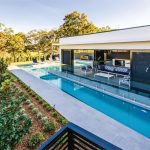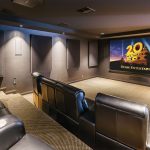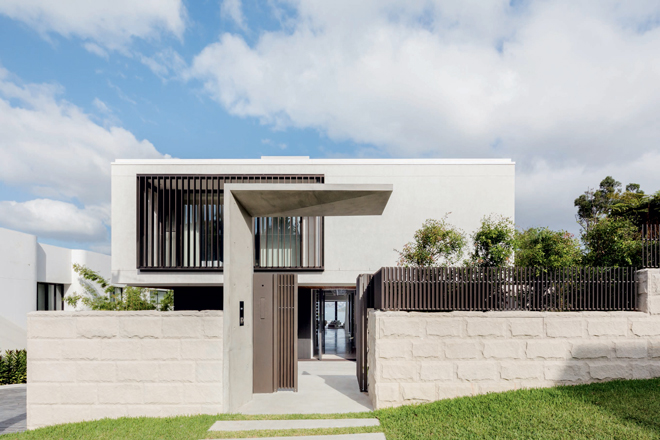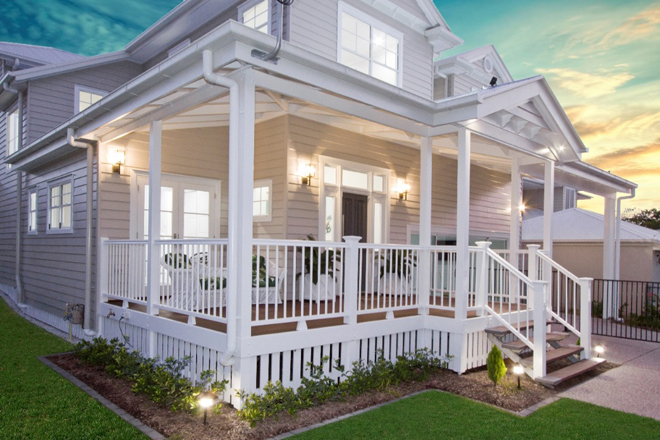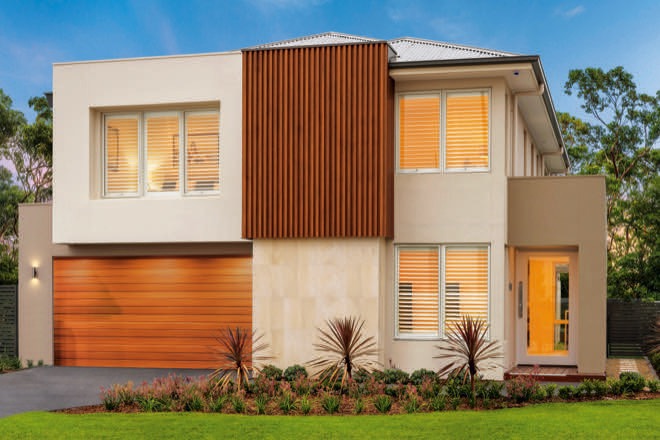Our houses are evolving and whether we like it or not, the smart home is here to stay
Despite the grumblings of those who say we’re losing ourselves to gizmos and gadgets, many Australians have gotten over the techno-shock of the early 2000s. Today, Aussies are some of the quickest embracers of new technologies worldwide, and many feel it has had a positive impact overall. When used and designed well, technology allows us to simplify or enhance our lifestyles and, purists aside, many homeowners have found a wide range of uses for it. Although smart home systems and home automation have been around for decades, they have only recently become more mainstream, in part due to tech companies including Amazon and Microsoft wanting a bigger market share of the Internet of Things, or IoT.
There are many installers and businesses in Australia that cater to the high-end, professional, smart and home automation desires of homeowners and builders. These companies can create custom solutions with an amount of control and flexibility that IoT devices can’t match, and provide continued support and technical assistance for the lifetime of these installations. Although there can be a significant financial investment in larger installations, the ease of use and added value they give to a home is a factor that can’t be ignored, and is easily offset by enhanced liveability and eventual resale value of a property.
Winchester Street Residence: a look inside a true smart home
This home in Southport, Queensland, was built on the site of the owner’s previous residence. The owner wanted a home that met high standards of automation, technological innovation and practical everyday use. This would also help provide a comfortable, luxurious space for entertaining, relaxation and general enjoyment. Three companies came together to achieve this: David Radic Prestige Homes, Bridger Automation, and Amber Technology. The initial concept was to provide the client with a home that covers every area of an automated home ecosystem. Areas include lighting, security, AV-audio entertainment, environmental control and the overarching control system, which coordinates all the aspects of the home to work together. These basic areas can also be supported with other technologies including home networking, home energy supply and storage, as well as energy monitoring for those who have backup power supplies or energy from sources like photovoltaics.
Starting with the control platform, which is the brains of the automation and smart processes, Bridger Automation selected a system that runs on the back of Crestron software, which is a controller for automated systems. Having a powerful yet easy-to-manage home allows the owner to operate their home’s functions with little to no effort. Interfacing with their home via smart devices and phones allows the user to control the specifics of the house on an item they’re already familiar with. The Crestron system uses an easy-to-use- and -navigate app to interface with every piece of technology, from lighting and security to the audio systems and home theatre. For this home, the specific choice of dedicated iPads allows easy access and use by the whole family. Lighting is one of the most vital elements in the home. Whether it’s from a natural or artificial source, light inside and around the home is important from an architectural and practical standpoint. A gloomy, dark home has a noticeable effect on inhabitants, so ensuring the home is well lit is important.
Using a C-bus lighting control system, the client had several key areas they wanted to light up, notably the entertainment and general living spaces. A warm white light was the foundation palette for the home’s illumination, allowing the interior to be well lit while feeling warm and welcoming. Overlayed on top of the subtle glow were key lighting groups, such as the outside pool and alfresco living, dining and kitchen, which would be key elements for entertaining guests and family throughout the year, and then mirroring this internally with key public living spaces in the home.
Additional focal points are the home theatre and entertainment zones with ambient lighting. Each space is individually controllable, allowing the owner to create an ambient and mood lighting environment to match the tone of the moment, as well as several large pre-programmed “scenes” for the lights. These scenes, activated at the push of a single button, are perfect for controlling large groups of lighting during entertaining, evenings at home as well as for switching off all lights just before bed. Additional lighting scenes allow the home to be lit for security purposes.
Our homes are a large investment in time, money and emotional attachment and yet many of us are very lax when it comes to protecting these investments. Security is an important factor of a home and the larger the residence, the more important it is to protect. This makes combining home security and smart home features a no-brainer. For the Winchester Street project, the security system comprises several key aspects. An external first-point-of-entry system controls all gates and other access points to the home, an alarm system, and a lighting security system which would be enabled when alarms were triggered. The security system’s smart integration allows the owner to arm and disarm doors remotely, giving access to trusted guests when away, monitor the surveillance Hikvision system while at home or away with a smartphone app, and allow entrance via wireless key fobs. Additionally, lighting scenes such as the “goodbye” scene allows the home to look occupied by lighting up key areas, while a “welcome home” scene activates when the system is disabled and the owner returns home, with the lights already on for them. All these systems were designed with ease of use in mind and, of course, they all connect back to the Crestron “brain” of the home, meaning they can be controlled anywhere in the house.
Now on to the fun part: entertainment. A residence with as much effort and passion put into it as this one needs to be perfect for entertaining. Inviting friends and family over and creating a hospitable and enjoyable environment are integral to the Australian lifestyle. To meet this demand, the Winchester Street project is packed to the brim with design elements and home automation technologies.
The clients wanted a robust and powerful distributed audio system as music and entertaining are important to them. This required careful design decisions to ensure the home had audio systems that sounded great, had amazing coverage, but also remained as discreet as possible. The solution for the external pool, garden and entertaining spaces was a discreet and durable outdoor sound system provided by Sonance. The SonArray SR1 series is a standout for the client: “Our favourite part of the new fit-out is the SonArray SR1 outdoor speaker system,” they say. “It’s easy to use and can be enjoyed all year-round. We’ve used it for casual barbecues and bigger celebrations like birthdays. It is perfect for our needs and offers significant value to a household that loves to entertain.”
The interior of the house has discreet multi-room audio products appropriately placed to give maximum coverage, while the smart aspect of the audio design is it allows finite control of what the client is listening to and where they are listening. As with the lighting scenes, the audio system allows audio to be played in individual rooms, each able to play a different source so that every family member can enjoy their own music. At the same time, the system can be set to play the same performance throughout, displaying exceptional flexibility. Again, all of this is controlled via the Crestron apps available on dedicated iPads and smart device apps. As a result, streaming music to the outdoor area while having a football game playing inside and watching a movie in the lounge room is not only easy to do, but also designed so each area doesn’t interfere with the other.
The crowning glory of the home’s AV system is, of course, the client’s dedicated home theatre.It boasts a large-format projection system for the visuals and uses discreet in-wall Sonance CINEMA-series speakers for the audio. The theatre’s Dolby ATMOS audio-compatible system makes every viewing session an unforgettable experience. Again, linked to the home’s control network, an easy interface allows intimate control over lighting, environment controls for aircon and heating, as well as sound controls and media source selection. And everything can be controlled from the plush comfort of the cinema seats.
Other areas that can be controlled are the home’s climate, many smart or home automation-compatible appliances and home energy systems. A professionally installed system allows endless possibilities and really the only limit is imagination and, of course, financial investment. This type of home installation not only provides unlimited personal control of one’s home, but also creates a greater feeling of understanding and peace of mind of how the home works.
Internet of things: DIY smart home
Unfortunately, not everyone can afford such a high-end system, but many companies today have jumped on the tech boom wagon and have come up with ingenious ways to help us in our daily running of the home. While there are those who dismiss these devices as techno doodads that merely complicate our lives, the strong uptake shows there is a demand for these sorts of technologies. In America, there is a battle underway for dominance in the entry-level smart home market. Amazon has created a unique little device called the Echo, which uses its Alexa operating system to create a voice-controlled hub that can connect with a wide range of networked devices in the home. This device also integrates users into Amazon’s greater range of services, allowing consumers to order groceries and many other products online. Microsoft and Google are also rigorously engaged in this market, although Australia has yet to see their services. However, there are still many smart home devices currently available that utilise pre-existing home networks to offer their services and help make controlling and using your home easier.
Smartphones and internet access are the first step for many of these devices, and the market allows a great degree of freedom and choice for an entry-level user. Devices such as the Philips’ Hue allows custom lighting systems utilising a smartphone app and, believe it or not, Wi-Fi-connected bulbs. Scenes and mood lighting are easy to create and control from a smart device and there are many applications that help create a smart home network that integrates technology and products from other manufacturers. Another company that has been successful as an entry point in the Aussie market smart home world is Belkin. The company’s WeMo is an ecosystem of devices that range from lighting to power management and networked security cameras. These come as individual packages so homeowners can pick and choose as they need.
For those on a tighter budget, Swann Smartseries is a modular package that allows a large degree of security; using networked cameras and motion sensors on doors and windows, it will detect when unauthorised entry has occurred. This package is backed by dedicated off-site recording and monitoring that can also be accessed via a mobile app. Swann also offers professional security storage as part of a subscription package. Each option offers its own set of unique features and degree of usability and performance, but it’s up to the consumer to decide between these smaller individual offerings and large dedicated installations. Each has its pros and cons, and consultation with specialists who have industry knowledge behind them is recommended.
Why smart homes?
So why smart homes? Technology and the benefits and costs it affords us is intrinsically linked to our modern lifestyles. It can be argued that there are visible benefits that far outweigh any perceived negatives from utilising what technical innovation has brought us.
Smart homes are a natural evolution of modern home design; we will be using large amounts of technology in our homes, regardless of how we feel about it. A well-designed, modern smart home with a well-developed automation system will make the technology work for you. The installations harness networking technologies, easy use of smartphones and a multitude of specialised products to enhance the performance of our homes and our lifestyles. And with dedicated support from installers, homeowners who invest in top-end systems will always have professional support and advice.
In the end, you can enjoy living in your home the way you want to with the security and knowledge that it’s been designed to help, rather than hinder, your day-to-day life.
Images of Winchester Street Project thanks to Amber Technology & Bridger Automation. ambertech.com.au; bridgerautomation.com.au
Written by James Cleland
Originally in Grand Designs Australia Volume 6 Issue 4









